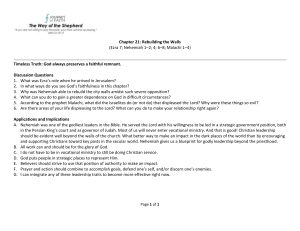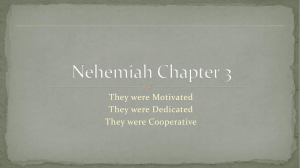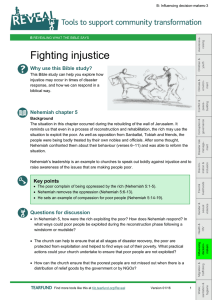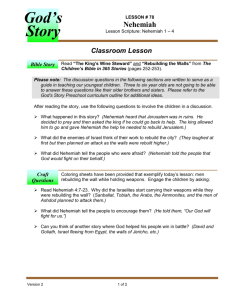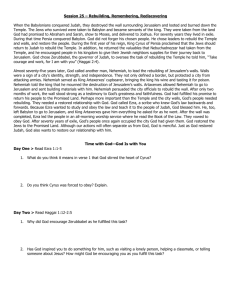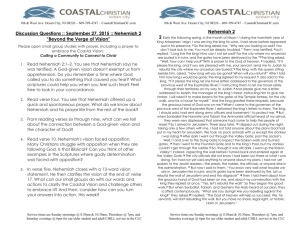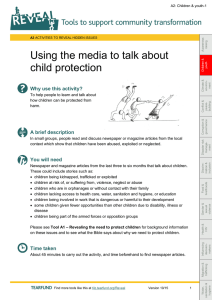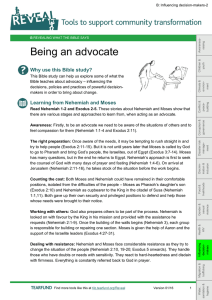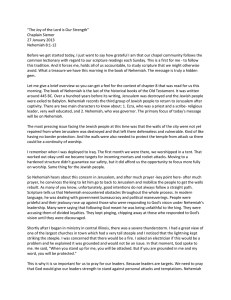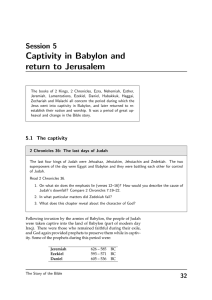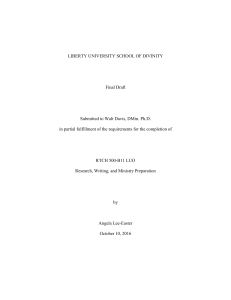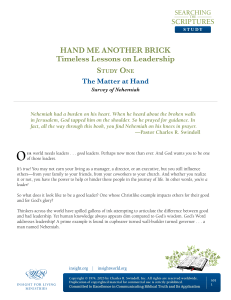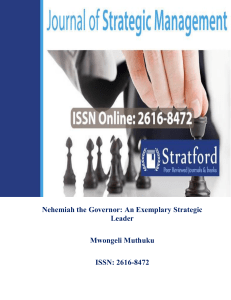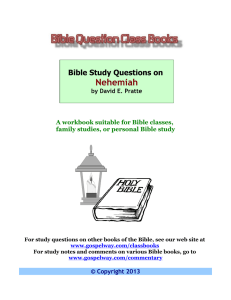B: Awareness raising-2
advertisement
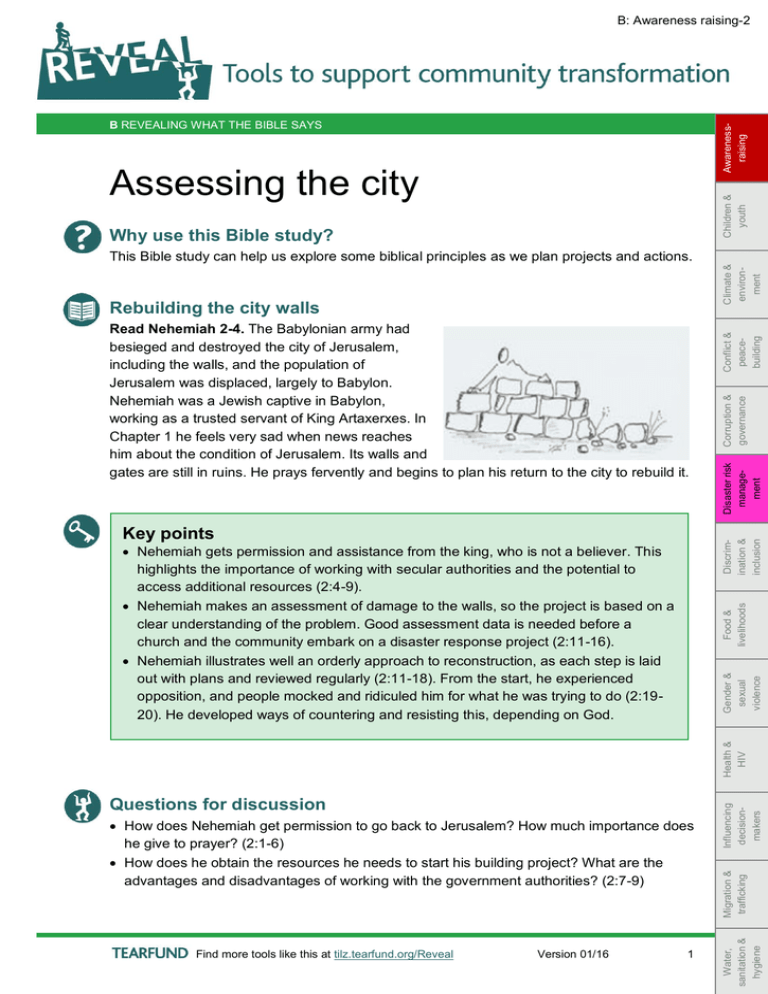
B: Awareness raising-2 Awarenessraising B REVEALING WHAT THE BIBLE SAYS Children & youth Assessing the city Why use this Bible study? Discrimination & inclusion Key points Corruption & governance Read Nehemiah 2-4. The Babylonian army had besieged and destroyed the city of Jerusalem, including the walls, and the population of Jerusalem was displaced, largely to Babylon. Nehemiah was a Jewish captive in Babylon, working as a trusted servant of King Artaxerxes. In Chapter 1 he feels very sad when news reaches him about the condition of Jerusalem. Its walls and gates are still in ruins. He prays fervently and begins to plan his return to the city to rebuild it. Disaster risk management Rebuilding the city walls Conflict & peacebuilding Climate & environment This Bible study can help us explore some biblical principles as we plan projects and actions. Find more tools like this at tilz.tearfund.org/Reveal Version 01/16 1 Migration & trafficking How does Nehemiah get permission to go back to Jerusalem? How much importance does he give to prayer? (2:1-6) How does he obtain the resources he needs to start his building project? What are the advantages and disadvantages of working with the government authorities? (2:7-9) Water, sanitation & hygiene Questions for discussion Influencing decisionmakers Health & HIV Gender & sexual violence Food & livelihoods Nehemiah gets permission and assistance from the king, who is not a believer. This highlights the importance of working with secular authorities and the potential to access additional resources (2:4-9). Nehemiah makes an assessment of damage to the walls, so the project is based on a clear understanding of the problem. Good assessment data is needed before a church and the community embark on a disaster response project (2:11-16). Nehemiah illustrates well an orderly approach to reconstruction, as each step is laid out with plans and reviewed regularly (2:11-18). From the start, he experienced opposition, and people mocked and ridiculed him for what he was trying to do (2:1920). He developed ways of countering and resisting this, depending on God. B: Awareness raising-2 B ASSESSING THE CITY Awarenessraising What does he do when he arrives at the city? Why does he wait three days before inspecting the walls? Why does he go at night with a small group of people? (2:11-16) The building work is carefully planned. What are some of the points in Nehemiah’s plan? (3:1-32, 4:16-18) How much time and effort do we give to praying and planning a project? Does everyone support what Nehemiah is doing? (4:3, 7-9) Why do some people oppose his building work? What sort of opposition might we expect as a church? Children & youth Notes This Bible study was first published in Tearfund (2011) Disasters and the local church http://tilz.tearfund.org/en/themes/disasters/disasters_and_the_local_church/ Climate & environment Conflict & peacebuilding Related tools C1 – Ways of taking action [C1: Awareness raising-1] Corruption & governance Disaster risk management Discrimination & inclusion Food & livelihoods Gender & sexual violence Health & HIV Influencing decisionmakers Migration & trafficking Water, sanitation & hygiene Find more tools like this at tilz.tearfund.org 2
